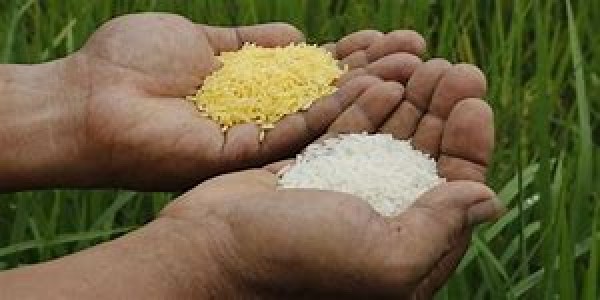The story of Golden Rice

October 21, 2019
Golden Rice, a genetically modified organism, has been the subject of a years long and multi million dollar struggle to see the light of day. First proposed at a rice conference in 1984, the term refers to a strain of rice modified to produce beta carotene, a vitamin A precursor. Currently the absence of Vitamin A in the diet is responsible for the death of 670,000 children every year in the developing world from frequent infections and other complications. Studies have shown that about a cup of the latest strains of golden rice a day would mitigate the risks of catastrophic diseases caused by Vitamin A deficiency. Acquiring regulatory approval has involved fighting through a host of complicated barriers, designed to make sure that every conceivable catastrophic outcome has been throughly considered and that maximum precautions have been taken.
Golden Rice was genetically engineered years ago by Ingo Potrykus at ETH Zurich and Peter Beyer at the University of Freiburg who identified the appropriate genes and inserted them into the rice strain. With an overriding focus on precaution, after years of study, golden rice has finally been approved by the US, Canada, Australia and New Zealand.
It is ironic that with up to 92% of U.S. corn, 94% of soybeans and 94% of cotton genetically engineered, and not a single adverse event attributable to their widestread employment, there is such widespread reaction against GMO plants. The first were introduced in 1983, and since then they have become ubiquitous. On the other hand, tobacco products kill 6 million people per years, and they are a legal and widely used product throughout the world today.
Comments
Submit a Comment
Please be sure to fill in all information. Comments are moderated. Please no link dropping, domains as names; do not spam and do not advertise.

 RSS Feed
RSS Feed
There are currently no comments